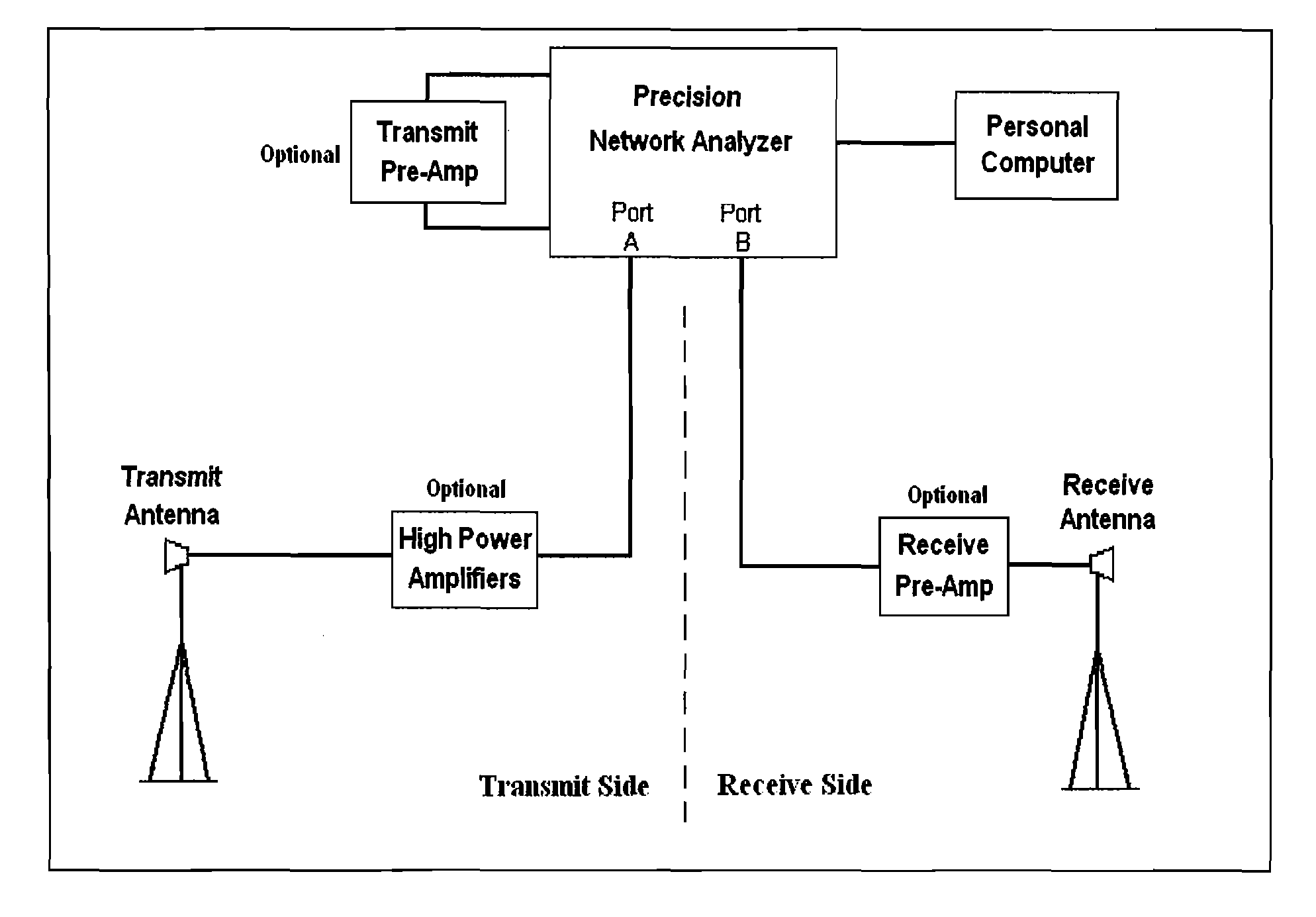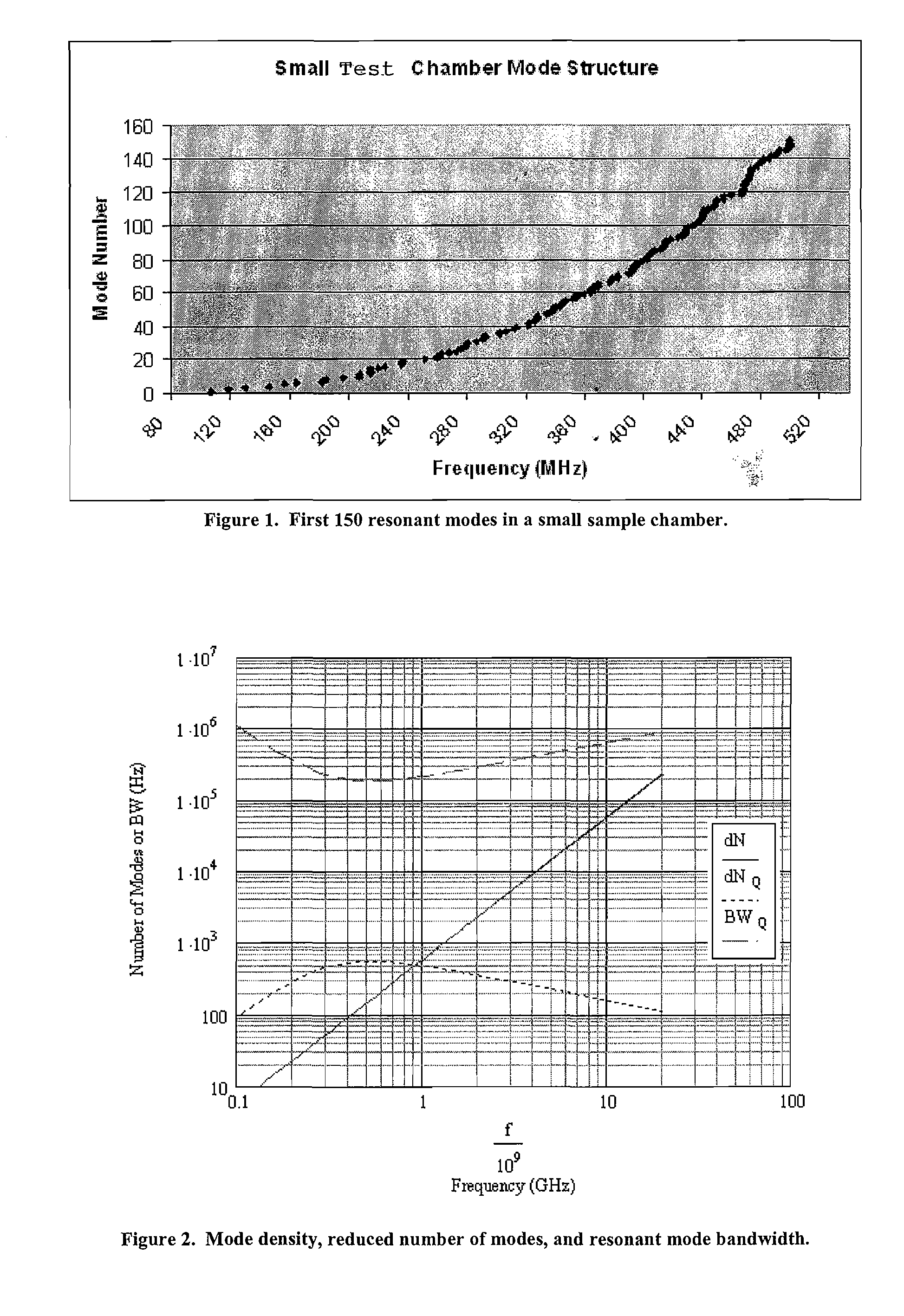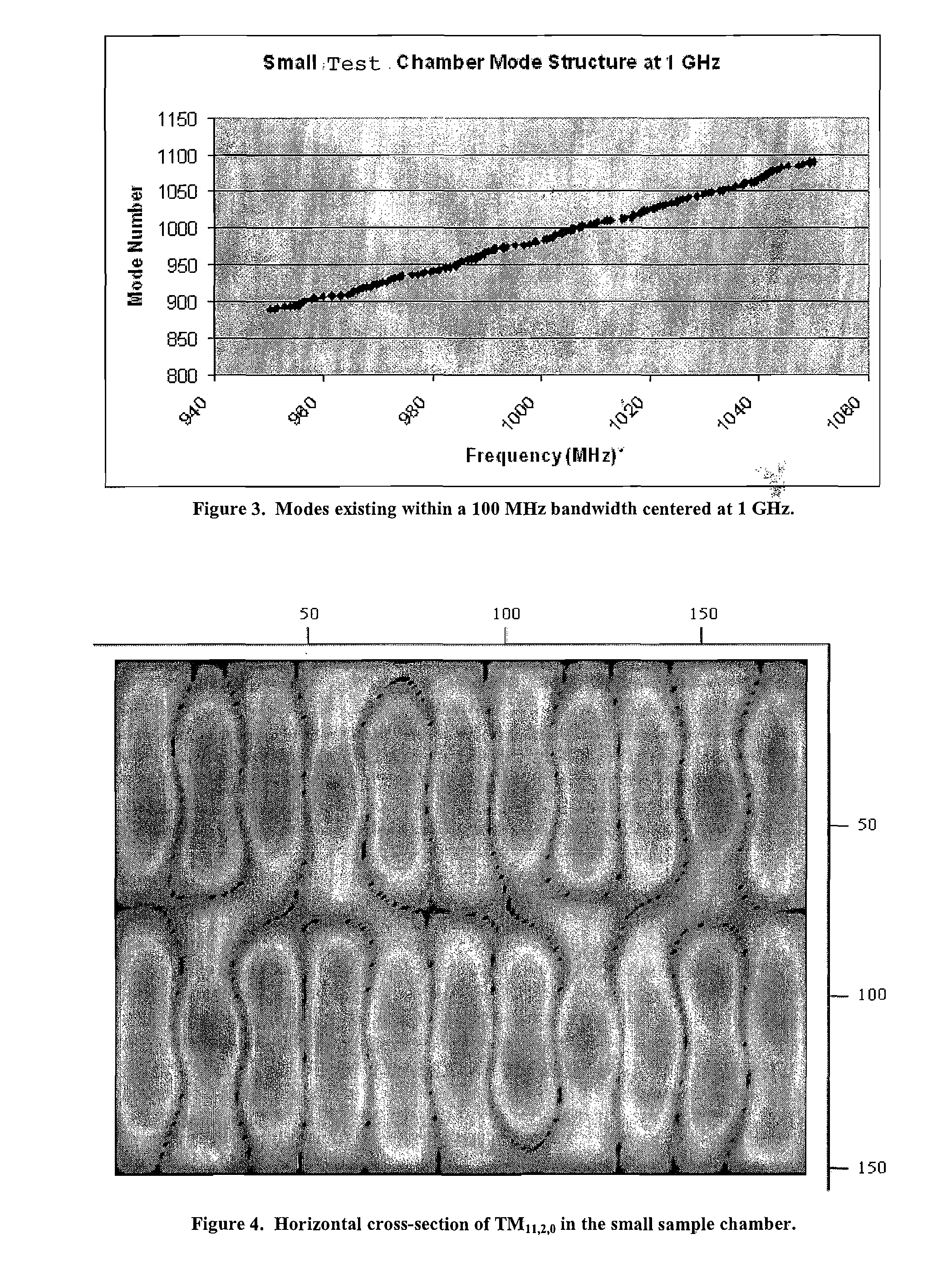Electromagnetic testing of an enclosure or cavity using a discrete frequency stir method
a technology of discrete frequency and enclosure, applied in the direction of resistance/reactance/impedence, measurement devices, instruments, etc., can solve the problems of time-consuming or equipment-intensive field mapping locations inside the enclosure, high field randomness and high variability, and achieve simplified test setup, reduced test time, and high accuracy.
- Summary
- Abstract
- Description
- Claims
- Application Information
AI Technical Summary
Benefits of technology
Problems solved by technology
Method used
Image
Examples
Embodiment Construction
[0032]Background: Mode Stir Introduction
[0033]Mode stir methods are used to generate statistically uniform fields within electrically large, relatively lossless enclosures or cavities for conducting electromagnetic testing. Mode stir techniques have been used extensively within the reverberation chamber environment for radiated immunity and emissions testing of electrical equipment, as well as shielding effectiveness measurements of screens, windows, cable shields, etc. Reverberation chambers are specific instances of an electrically large, high Q cavity that support a large number of normally distributed eigenmodes (TE and TM modes) with zero mean and equal variances. The large number of modes combine (in a vector summation sense) to generate a randomized electromagnetic environment within the cavity. Perturbation of this modal structure, commonly called mode-stirring, by changing either the geometry of the cavity (mechanical mode stir) or the frequency of the excitation source (el...
PUM
 Login to View More
Login to View More Abstract
Description
Claims
Application Information
 Login to View More
Login to View More - R&D
- Intellectual Property
- Life Sciences
- Materials
- Tech Scout
- Unparalleled Data Quality
- Higher Quality Content
- 60% Fewer Hallucinations
Browse by: Latest US Patents, China's latest patents, Technical Efficacy Thesaurus, Application Domain, Technology Topic, Popular Technical Reports.
© 2025 PatSnap. All rights reserved.Legal|Privacy policy|Modern Slavery Act Transparency Statement|Sitemap|About US| Contact US: help@patsnap.com



